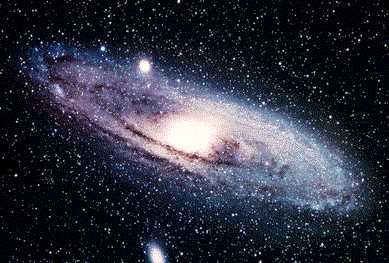In Washington For the majority of its 25 years in orbit, the Hubble Space Telescope has been awe-inspiring viewers all around the world with its stunning views. However, the spacecraft—the result of a partnership between NASA and the European Space Agency—produces far more than just eye-catching images. Researchers claim that its scientific equipment has fundamentally changed how we think about the universe and its past. At a screening of 'Hubble's Cosmic Journey,' a documentary that debuted last night (April 20) on National Geographic Channel, Colleen Hartman said, 'We hoped [Hubble] would revolutionise our vision of the cosmos]' last week.
At NASA's Goddard Space Flight Center in Greenbelt, Maryland, Hartman holds the position of deputy director for science, operations, and programmed performance. Those hopes were realised. Approximately 4,000 astronomers from all over the globe have utilised Hubble since its launch aboard the space shuttle Discovery on April 24, 1990, resulting in the production of more than 12,700 scientific papers, making it one of the most productive equipment ever created.
Solar system exploration
After American astronomer Lyman Spitzer started pushing for a space-based instrument in 1946, NASA began work on the 'Large Space Telescope' a little more than two decades later (It was named after famous astronomer Edwin Hubble in 1983.)With a damaged mirror upon launch, the Hubble Space Telescope originally sent back hazy images of the cosmos.
Hubble was unable to produce the stunning, recognizable images for which it is now famous, but astronauts were able to repair the issue during a servicing mission in 1993.Comet Shoemaker-Levy 9 struck Jupiter shortly after the fix. Hubble captured the comet as it fragmented, providing new information about the potential contribution of comets to the distribution of water and other materials to the planets of the solar system, including Earth. The gas giant's atmosphere contained surprisingly little water, as seen in other photos of Jupiter.
The largest object in the main asteroid belt between Mars and Jupiter, Ceres, the dwarf planet, was also seen in photos taken by Hubble. These photographs showed bright and dark patches on Ceres' surface. When its research mission kicks off on April 23, NASA's Dawn spacecraft will try to ascertain the makeup of Ceres' enigmatic bright spots. Asteroid Vesta, which Dawn orbited from July 2011 to September 2012, was also the subject of geological research by Hubble.
Additionally, Hubble has observed the far-off dwarf planet Pluto, assisting astronomers in mapping its surface and even revealing four brand-new moons of Pluto. It took the NASA New Horizons mission more than nine years to reach close enough to compete with Hubble, but the mission will start capturing photographs in May 2015. (New Horizons, which was sent into orbit in January 2006, will pass past the Pluto system on July 14.)
The existence of the cosmos
Edwin Hubble, an American scientist who discovered that the cosmos is expanding rather than static, was honoured with the name of NASA's most well-known space telescope. Identifying the rate at which the cosmos is expanding was one of Hubble's key objectives. The telescope has also revealed evidence for the existence of dark energy, the enigmatic force that opposes gravity and propels galaxies farther and farther apart.
Prior to Hubble's launch, estimates for the universe's age varied widely, from 10 to 20 billion years. Hubble helped astronomers determine the age of the universe with an accuracy of roughly 5% by observing unique pulsating stars called Cepheid variables.
Further than the Milky Way
Hubble gave the world the heads-up that our Milky Way galaxy was about to collide head-on with its neighbour, the Andromeda galaxy. The Andromeda galaxy will merge with our own in about four billion years, according to calculations made by observing the sideways velocity of the incoming galaxy. As Hubble has demonstrated, mergers are frequent outside the Milky Way.
When researchers found galaxies with extended tails of gas and dust, which are the remains of mergers, they pointed Hubble in their direction to elucidate the features. A new class of extraordinarily big and brilliant star clusters were discovered when the satellite telescope examined the source of these collisions.
Locating extraterrestrial life
The planet-hunting NASA spacecraft Kepler likely comes to mind when people hear the term 'exoplanet' today. However, the first image of a planet in orbit around another star was taken by Hubble in 2008.Even before that, Hubble's observations of brightness dips as each prospective planet passed in front of Earth's star helped discover 16 probable planets orbiting other stars.
The tool has also been useful in studying the atmospheres of other, far-off worlds. Hubble indirectly prepared the way for Kepler. The vastness of the universe was made clear by Hubble's discovery of billions of stars that may potentially support planets. A certain degree of technological proficiency was also met with the launch of Hubble into space, according to NASA officials.
An ongoing objective
Astronauts can swap out the scientific instruments and repair any worn-out pieces on Hubble because it was built to be serviced. The spaceship has been kept active for 25 years because of this strategy. Wailer predicts the ship will continue gathering data for another five or six years after the previous service mission in 2009, which replaced worn sections.
At the showing of 'Hubble's Cosmic Journey,' assistant administrator of NASA's Science Mission Directorate and retired astronaut John Grunfeld, who worked on Hubble on three different space missions, praised the spacecraft. To an auditorium full of people, Grunfeld said, 'Hubble still has a big road ahead of it.' I continue to believe that the field's biggest discovery is yet to come.




Leave Comment
1 Comments